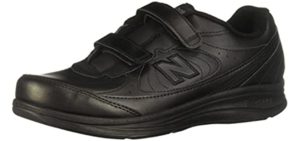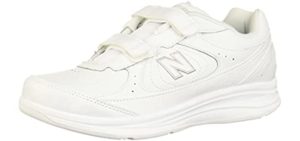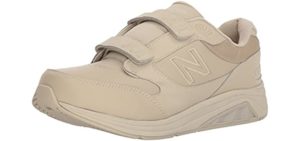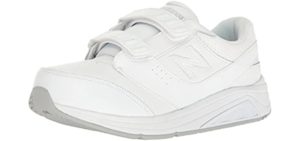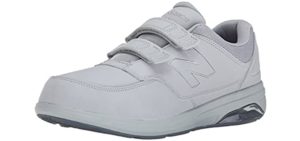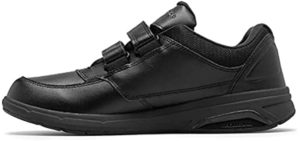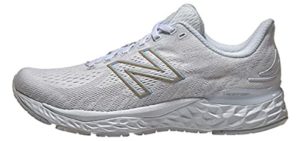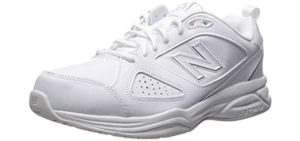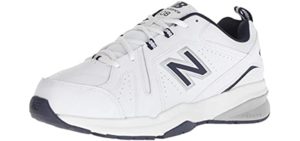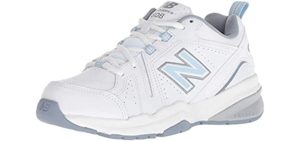We are not all born with perfect feet. With many medical conditions, injuries, and sometimes just age, certain foot complications may occur, for which we may need either specifically prescribed orthotics or general orthotic devices.
Orthotic devices can include anything from toe pads to insoles and even braces that are there to help correct a foot issue, relieve pain, or help you move with more ease.
However, when it comes to orthotics, you do need shoes that can accommodate them, and your regular flats, pumps, or even loafers may not quite be as accommodating.
For the most part, Orthopedic shoes are ideal for use with orthotics. However, we do not all want to wear Orthopedic shoes, which can be quite costly.
Luckily, some athletic shoe models, such as New Balance shoes for Orthotics, offer an accommodating fit and removable layers, allowing you to use orthotics of your choice easily.
So, I have chosen these New Balance shoe models specifically because of their fit, construction, and removable layers, allowing you to use your own orthotic devices.
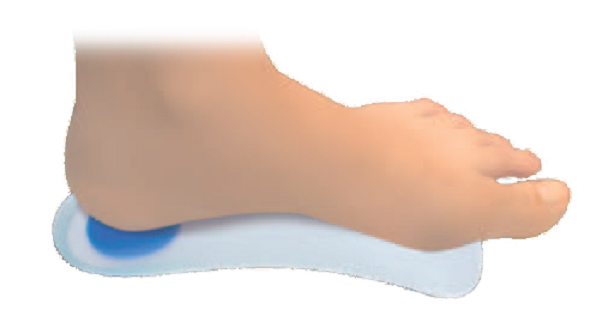
Orthotic Types
You get two basic types of Orthotics, Customized orthotics, and generic Orthotics, Custom Orthotics are prescribed by a Physician or podiatrist to support certain problem spots in your feet. They can lift your heel, support the arch, and accommodate for certain foot deformities.
Generic Orthotics are mostly insoles and pads sold over the counter that cater to general foot issues, such as flat feet or high arches, Metatarsalgia, and other sports injuries.
- Correct Foot Abnormalities – You may have discomfort or pain as a symptom; however, there may also be some underlying issues with your feet that are causing structural abnormalities, such as a collapsed arch, or high arch, in which case they cause the symptoms. Insoles and Orthotics provide proper support to address these underlying issues and thus relieve pain and discomfort.
- Pressure Relief – The cushioning and support of an Orthotic device provide pressure on your feet from everyday activities and allow you to stand or walk for longer.
- Improve Back knee and Ankle Health – Custom or generic orthotics can help to properly align your feet and provide impact protection that improves the health of your back, knees, and ankles.
Shoes to Wear with Orthotics
You do get shoe types that are better to wear with orthotics than others, and here are a few features that you can look for;
- Support – You need shoes with firmer base support and less flex so that the orthotic device can properly support your arch and keep your feet aligned. A more rigid and secure heel counter will help keep your feet and ankles more stable.
- Firmer Midsole – Look for a firmer cushioned midsole to work with the orthotic device.
- Removable Layers – The insole or footbed of the shoe needs to be removable if you want to use your insoles or orthotic device that will take up some space.
- Roomy Toe Box – A roomy toe box is ideal for many foot deformities and conditions such as hammertoes, bunions, and swelling. It also allows orthotics that cater to the front part of the foot, such as toe separators or metatarsal pads.
- Low Heel – It is best to opt for shoes with a low or flat heel when you wear orthotics, as the heel may interfere with the purpose of the orthotic device.
- Extra Depth – A shoe with some extra depth or more room in the actual shoe will accommodate most orthotics much easier.
Features of a Good New Balance Shoe Suitable for Orthotics
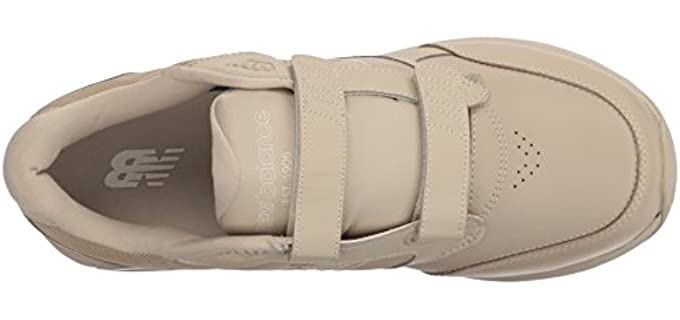
- Uppers – The shoe Models I have chosen for wearing with Orthotics will have a roomy toe box and extra depth design. They may have leather mostly or mesh uppers with a smooth lining and a secure heel collar fit.
- Cushioning – the NB soft insole and Pu footbed that New Balance uses in their shoe models are removable, allowing you to use your own Orthotics.
- Midsole – We have opted for firmer and more supportive midsoles such as the IMEVA midsole with slight flex, the shock absorbing ABZORB midsole, and the much firmer Pu midsole for support.
- Support – Support features include a molded and more supportive heel collar to help stabilize the feet and ankles and a shank in some models, and rollbar technology.
- Outsole – The Outsole will either be regular rubber or Ndurance rubber, with a lower heel-to-toe drop design.
- Options – The New Balance shoe models we have chosen are available in wider width fits and more color options.
- Other -Some of these models are Orthopedic shoe models and are Medicare / HCPCS code = A5500 rated, which means they may be eligible for Medicare reimbursement.
Reviews: The Best New Balance Shoes Suitable for Orthotics
The Following Shoe models from New Balance have an accommodating fit that allows you to wear orthotic devices;
1
Orthotic Suitable Shoes
- The New Balance 577 Hook and Loop shoe model has easy access and removable layers to accommodate orthotics.
- It is a leather shoe with Velcro closure that can depend on wider to accommodate orthotics.
- The shoe has extra depth and is available in wider widths.
- It has a removable insole and ABZORB cushioning.
2
Orthotic Suitable Velcro Shoe
- The 928 also has a hook and loop Velcro closure, allowing easier access for orthotics and a more adjustable fit.
- It has a removable PU footbed and shock-absorbing midsole.
- The outsole is a durable rubber.
- The uppers are leather with a roomy design.
3
Orthotics Walking Shoe
- The New Balance 813 is a stable design shoe with a hook and loop closure for orthotics.
- It has a roomy design and adjustable fit.
- There is Rollbar technology and a removable cushioned footbed for comfort.
- The shoe is leather with a wider fit.
4
Shoe for Orthotics
- The Fresh Foam 880 has stretchable mesh uppers that are breathable and accommodating.
- There is a removable insole so that you can use your insole.
- The Midsole is a Fresh Foam and Ultra Cushioned.
- The heel is molded for a secure fit.
5
Medicare Rated Orthotic Friendly Shoe
- The 623 is a Cross Training shoe with an accommodating fit for orthotics.
- It has leather uppers and a roomy toe box.
- There is a removable insole and an IMEVA midsole,
- The outsole is a durable and high traction rubber.
6
Orthotic Freidnly Shoe
- The New Balance 608 is a casual shoe with an accommodating fit for orthotics.
- It has leather uppers and an ABZORB midsole for cushioning.
- There is an Internal shank for stability and seamless phantom lining.
- The shoe has a removable insole, and you can use your insole.
Index Table: Top Rated New Balance Shoes Suitable for Orthotics
| No. | Shoe | Men ♂ | Women ♀ | Features | Brand | Score |
|---|---|---|---|---|---|---|
| 1 | New Balance® - Orthotic Suitable Shoes | 577V1 | 577V1 |
| New Balance | 98.2 |
| 2 | New Balance® - Orthotic Suitable Velcro Shoe | 928V3 | 928V3 |
| New Balance | 98 |
| 3 | New Balance® - Orthotics Walking Shoe | 813V1 | 813V1 |
| New Balance | 98 |
| 4 | New Balance® - Shoe for Orthotics | 880V11 | 880V11 |
| New Balance | 97.9 |
| 5 | New Balance® - Medicare Rated Orthotic Friendly Shoe | 623V3 | 623V3 |
| New Balance | 97 |
| 6 | New Balance® - Orthotic Freidnly Shoe | 608V5 | 608V5 |
| New Balance | 97 |
Table of Contents
- Orthotic Types
- Shoes to Wear with Orthotics
- Features of a Good New Balance Shoe Suitable for Orthotics
- Reviews: The Best New Balance Shoes Suitable for Orthotics
- Index Table: Top Rated New Balance Shoes Suitable for Orthotics
